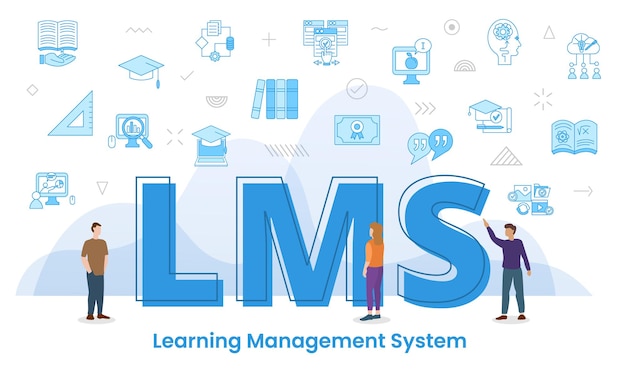Introduction
In a time of rapid technological progress, digital education has become fundamental in molding the future of learning. At the forefront of this movement lies the Government Learning Management System a crucial tool reshaping education by offering a strong platform for the effective transmission of knowledge and the advancement of skills. This piece delves into the importance of the Government LMS in changing education, its features, advantages, and its significant influence on the educational environment.
Understanding Government LMS
A Government LMS is a centralized digital platform designed specifically for educational institutions and government bodies to administer, manage, and deliver learning content. It serves as a hub for organizing courses, distributing resources, conducting assessments, and tracking progress, thereby streamlining the educational process across various departments and agencies.
Features of Government LMS
Centralized Administration: Authorities can supervise several educational programs at once. Thanks to the government LMS’s ability to facilitate centralized administration. It facilitates easy management of courses, user accounts, and content from a single interface, ensuring uniformity and efficiency in educational delivery.
Customization and Adaptability: These systems offer customization options to tailor the learning experience according to the specific needs of different departments or agencies. The LMS supports a range of learning styles and preferences thanks to flexible features like different course structures and content formats.
Data Analytics and Reporting: An integral feature of Government LMS is its capability to generate comprehensive reports and analytics. Educational administrators can track learner progress, identify areas for improvement, and assess the effectiveness of courses through data-driven insights.
Secure and Compliant: Given the sensitive nature of governmental data, security and compliance are paramount. This ensures stringent security measures and compliance with regulatory standards to safeguard information, maintaining confidentiality and integrity.

Government LMS: Transforming Education
The implementation of this marks a paradigm shift in the educational landscape, catalyzing several transformative impacts.
Enhanced Accessibility and Inclusivity
It promotes inclusivity by breaking down geographical barriers and offering accessible learning opportunities to a diverse audience. It enables learners from remote or underserved regions to access high-quality educational resources, fostering equitable learning experiences for all.
Empowering Skill Development
The versatility of LMS empowers governments to focus on skill development initiatives. By offering a repository of courses spanning various domains, from technical skills to policy frameworks, it facilitates upskilling and reskilling programs essential for workforce development.
Cost-Efficiency and Resource Optimization
Digital platforms reduce the need for traditional learning materials, leading to cost savings for educational institutions. It optimizes resource allocation by digitizing content delivery and mitigating expenses associated with printing, distribution, and infrastructure.
Fostering Collaborative Learning Environments
Through interactive features like discussion forums and collaborative projects, LMS nurtures a culture of collaborative learning. Peer interactions allow students to exchange knowledge and work together to solve problems which improves the learning process as a whole.
Role of Government LMS in Educational Policy
It plays a pivotal role in shaping educational policies and strategies. It serves as a tool for governments to implement and monitor educational initiatives, ensuring alignment with national or regional educational goals. Additionally, it aids in assessing the effectiveness of policies by providing insights derived from data analytics and learner performance metrics.
The Future Outlook of Government LMS
The trajectory of LMS points towards continual evolution and innovation. It is anticipated that as technology progresses. These platforms will incorporate cutting-edge innovations like machine learning (ML) and artificial intelligence (AI). The future of education through Government LMS is probably going to be redefined by the focus on augmented reality (AR) and adaptive learning methodologies.
Government LMS: Revolutionizing Public Education
The integration of Government Learning Management Systems within public education sectors has brought about a significant revolution in the way educational institutions function. This digital infrastructure empowers administrations to streamline learning processes, improve accessibility, and optimize resource utilization. Let’s delve deeper into the various ways in which Government LMS revolutionizes public education.
Efficient Administration and Management
Government LMS streamlines administrative tasks within educational institutions. It simplifies course management, facilitates enrollment, and automates grading processes. Through a centralized platform, administrators can effortlessly oversee various academic programs and efficiently allocate resources based on requirements.
Optimized Learning Experience
Students benefit from a more optimized learning experience through it. It offers access to a diverse range of educational resources, including multimedia content, interactive modules, and assessments. This multi-faceted approach caters to different learning styles, enhancing engagement and comprehension among students.
Empowering Educators
Educators play a pivotal role in the success of Government LMS implementation. These systems equip teachers with tools for content creation, assessment design, and personalized instruction. By leveraging these resources, educators can tailor their teaching methods to address the individual needs of students, fostering a more effective learning environment.
Enhanced Parental Involvement
It facilitates increased parental involvement in a student’s academic journey. Parents can access their child’s progress reports, track assignments, and communicate with teachers, fostering a collaborative effort between home and school for the student’s educational development.

Adaptability to Changing Educational Needs
One of the remarkable aspects of Government LMS is its adaptability to evolving educational needs. As pedagogical methodologies evolve or new subjects emerge, these systems can swiftly incorporate changes, ensuring that the curriculum remains relevant and up-to-date.
Supporting Specialized Learning Programs
LMS caters to specialized learning programs- remedial education, vocational training and special needs education. These systems provide tailored resources and support mechanisms to address the unique requirements of diverse student populations, fostering inclusivity within the educational sphere.
Challenges and Opportunities Ahead
It presents numerous benefits. Its implementation is not devoid of challenges. Some institutions may face hurdles related to infrastructure, funding, or resistance to technological adoption. These challenges present opportunities for collaboration, innovation and investment in technological infrastructure to overcome barriers and optimize the efficacy of these systems.
Conclusion
The Government Learning Management System serves as a fundamental element in revolutionizing education within government systems digitally. Its launch signifies a commitment to providing everyone with affordable, excellent education. With ongoing technological progress, the LMS is positioned to lead the way in innovating education, aiming to make learning more flexible, inclusive, and efficient for future generations. If you are seeking a Government Learning Management System (LMS), consider a proficient team specializing in Learning and Development (L&D). These skilled professionals have the knowledge to strategically bridge the skills gap within governmental bodies at an accelerated pace.



















